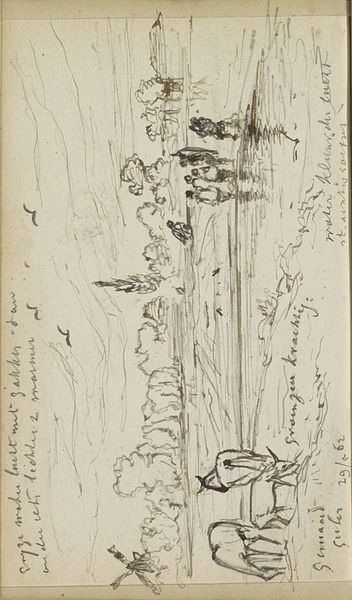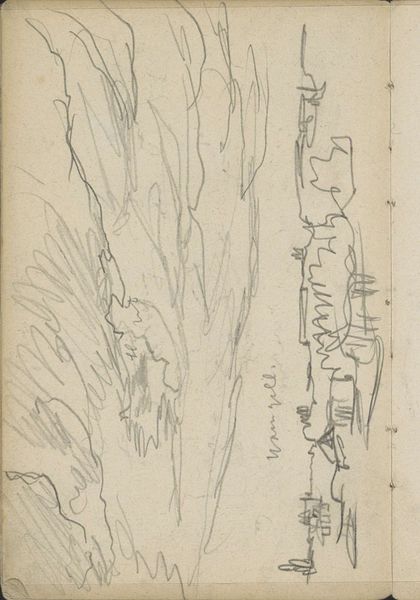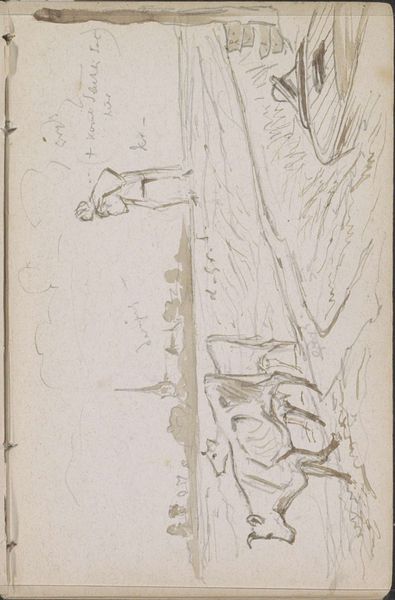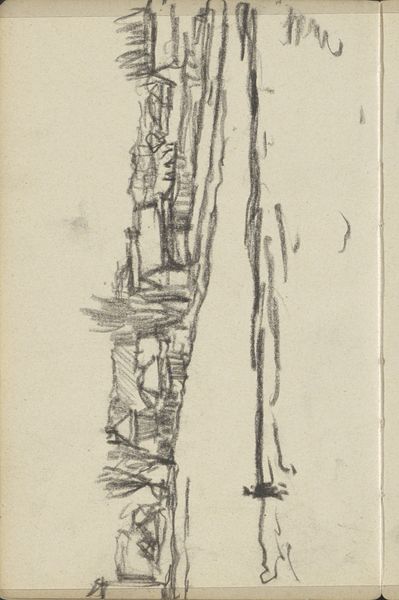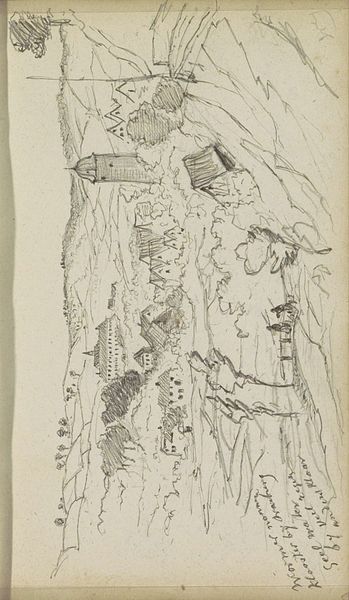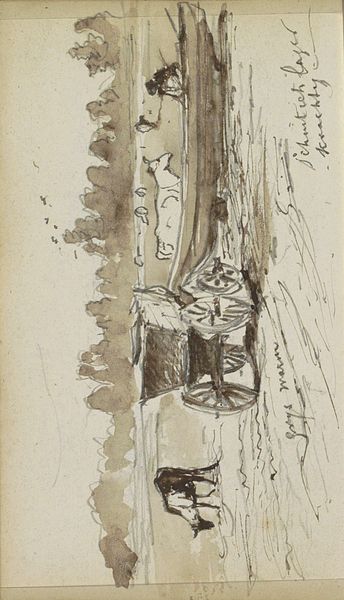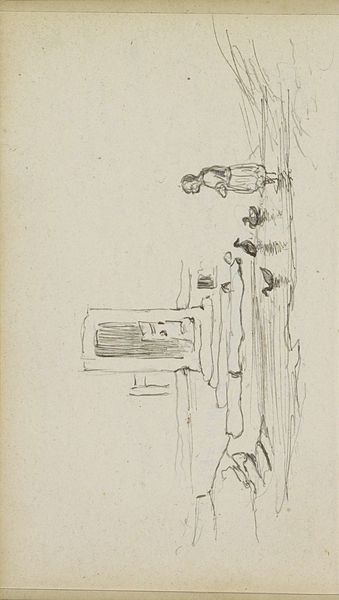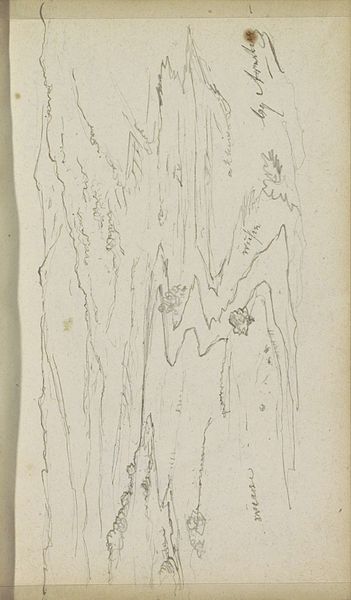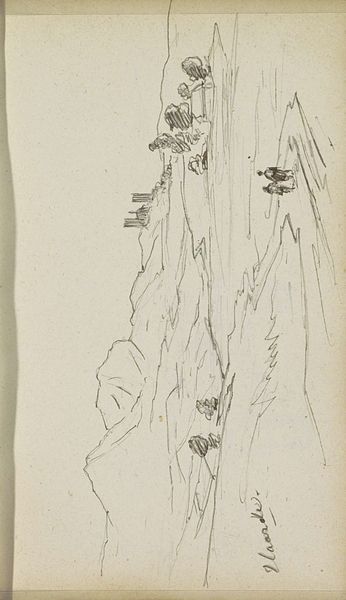
#
amateur sketch
#
toned paper
#
light pencil work
#
pencil sketch
#
incomplete sketchy
#
etching
#
ink drawing experimentation
#
underpainting
#
watercolour illustration
#
watercolor
Copyright: Rijks Museum: Open Domain
This is a pen and ink drawing of a 'Polder Landscape with Windmills' made by Johannes Tavenraat in the 19th century. The windmill, a dominant symbol here, is not merely a functional structure but a powerful motif. It speaks to the Dutch struggle against the waters, a symbol of human ingenuity, resilience, and the constant negotiation with nature. The windmill has ancient roots. Its symbolism can be traced back to early cultures where the wheel represented the cyclical nature of life and the sun's eternal return. In the medieval ages, windmills appeared in European iconography to signal the power of human beings to transform their environment. Here, the windmill’s presence resonates with a profound, almost subconscious, understanding of humanity’s relationship with its surroundings. The artist has captured a scene in which the flatlands of the polder is not a depiction of reality but an engagement with the very essence of what it means to inhabit and transform a landscape. The image evokes feelings of both nostalgia and progress.
Comments
No comments
Be the first to comment and join the conversation on the ultimate creative platform.



